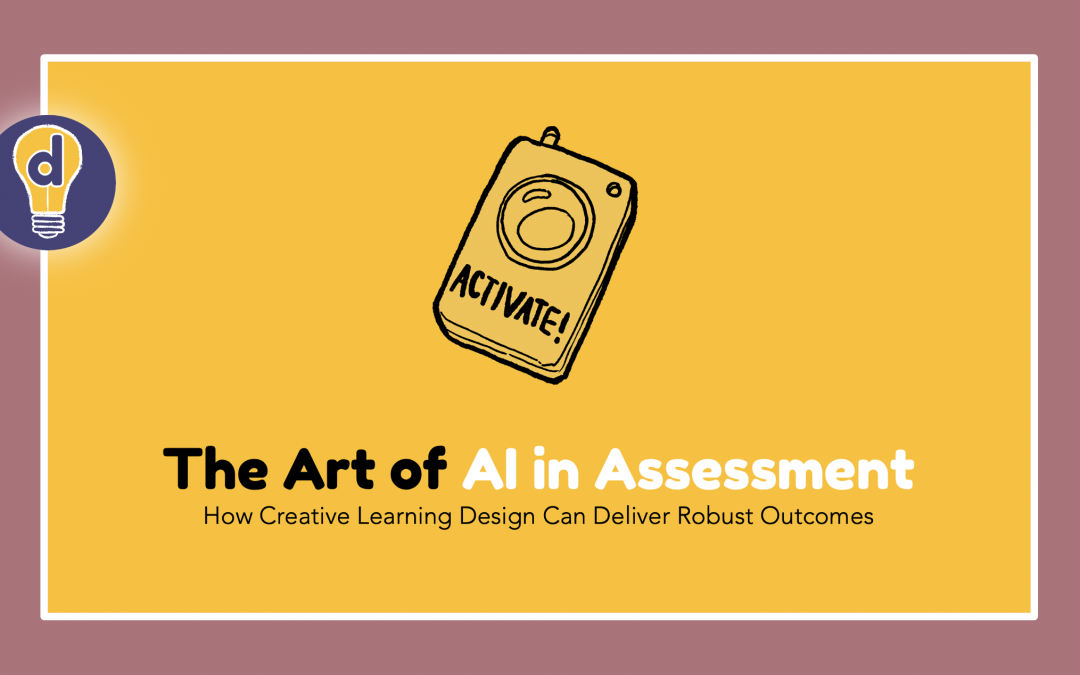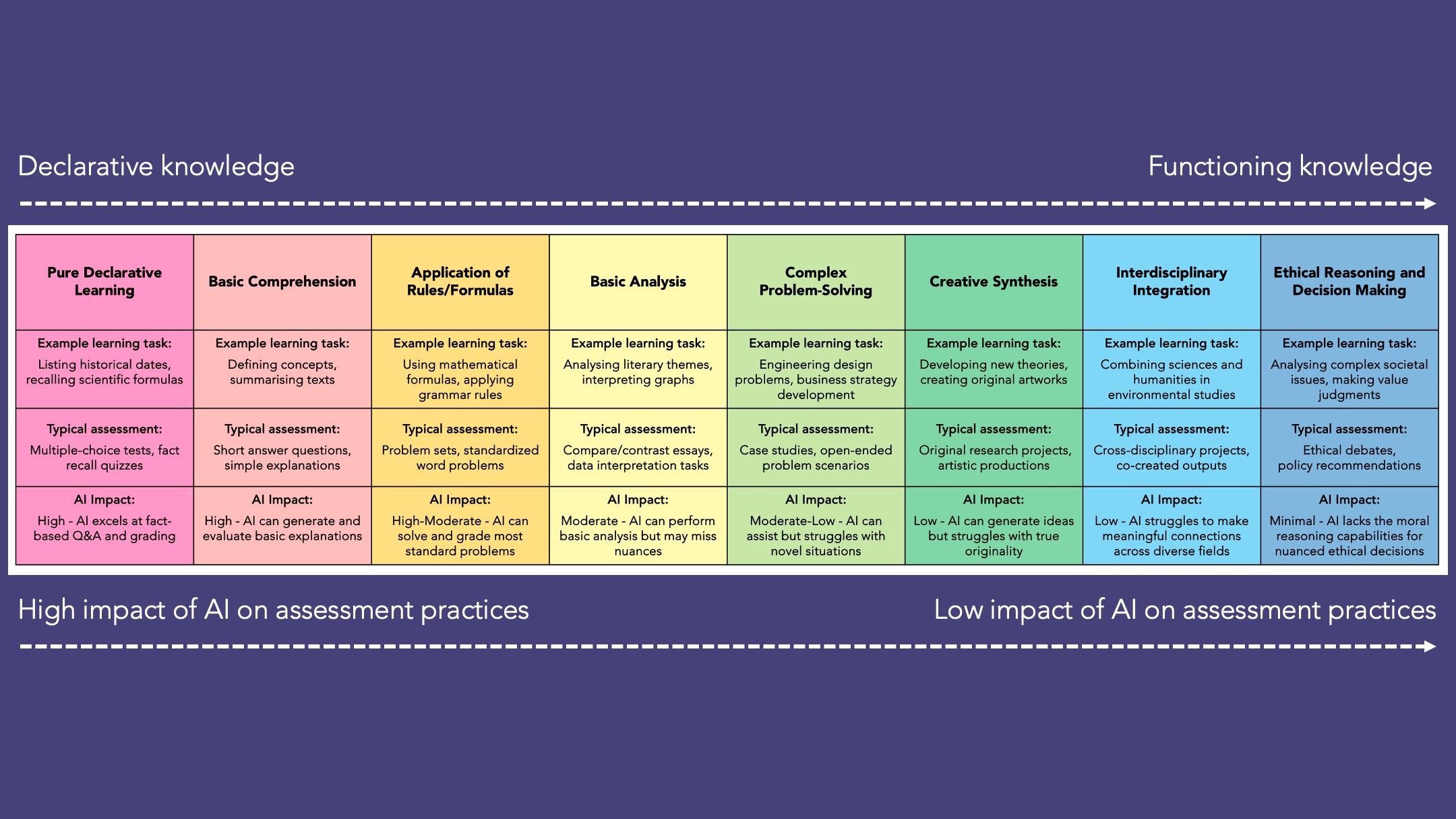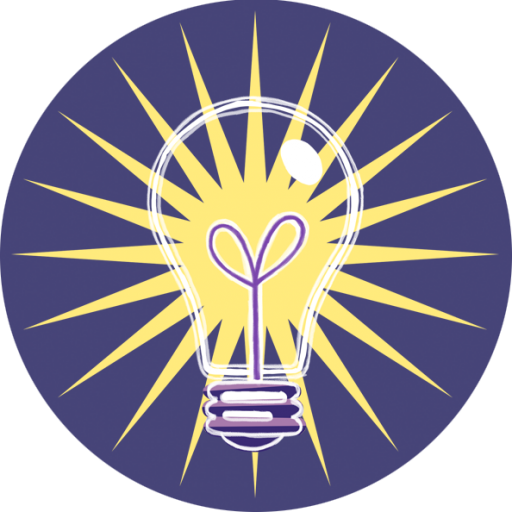In Ding’s recent webinar on the Art of AI in Assessment, we explored how creative learning design can produce more robust outcomes in the age of AI. If you missed it, don’t worry – in this blog post we’ll share the highlights with you.
We kicked off by suggesting that the concerns around AI in education aren’t entirely new. There are parallels with past technological advancements, from the introduction of writing to calculators, each of which prompted similar waves of concern about the future of learning. This historical perspective helps us approach the AI challenge with a bit more calm and clarity.
A shift in knowledge production
At Ding, we believe AI is producing a shift in education away from assessing purely declarative knowledge (facts and figures that can be easily looked up) towards functioning knowledge. This is the kind of knowledge that really matters in the real world – the ability to apply learning in unpredictable situations, solve complex problems, and think critically and creatively.
We introduced a ‘spectrum of knowledge’ and discussed how different types of assessment align with this spectrum. Many traditional forms of assessment, like multiple-choice tests or basic comprehension questions, are more vulnerable to AI interference. In contrast, assessments that focus on higher-order thinking skills, like creative synthesis or ethical reasoning, are naturally more resistant to AI “cheating”.
Creative approaches to assessment
During the webinar, we shared some innovative assessment methods u sed in creative education that are inherently more AI-resistant:
-
The ‘crit’: a convened meeting where students present their work to peers and receive immediate feedback. This real-time defence of ideas is hard to fake with AI.
-
Practice-based research: where learners conduct research by doing and making things, applying theoretical knowledge in practical situations.
-
Interdisciplinary projects: bringing together knowledge from different fields to solve complex problems, something that AI often struggles with.
These methods not only produce more robust assessments but also help bridge the employability gap by fostering skills like collaboration, adaptability, and critical thinking – skills that employers consistently say they need in graduates.
An opportunity to develop more meaningful assessment
Implementing these changes in assessment methods can seem daunting, but this shift isn’t just about keeping up with technology – it’s an opportunity to enhance the quality and relevance of higher education.
The webinar concluded with a call to action for higher education to incorporate more creative, AI-resistant assessment methods. In doing so, institutions can improve student satisfaction, enhance teaching quality, boost achievement and engagement, and better prepare students for their future careers.
At Ding, we’re here to help you create learning experiences that are engaging, effective, and future-proof. If you’re ready to explore how creative learning design can transform your assessment practices, we’d love to chat.
You might also like:
- Reducing cognitive load
- Designing metacognition into learning experiences
- Onboarding and learning design – Ellie Soccorsy podcast
Want to learn how to build great courses?
We run a PGCert, PGDip and MA in Creative Teaching and Learning Design.
Find out which stage is right for you.





Trackbacks/Pingbacks